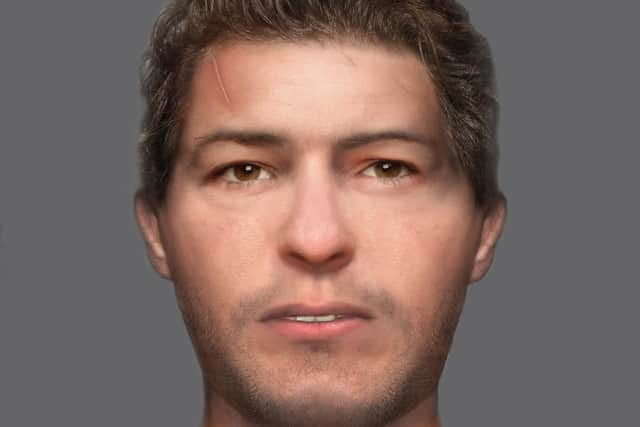'Loch Lomond wanderer' identified as man found in Cramond bog
and live on Freeview channel 276
The man was one of nine adults and five children who died in the sixth century and whose bodies were dumped in the latrine at a former Roman baths at Cramond,. It was earlier believed the group may have been from one family.
Now it is believed he may have hailed from the Loch Lomond area, with the man travelling to Cramond, judged to have been an important political centre that attracted well-connected individuals, at a time of great turmoil across what became Scotland.
Advertisement
Hide AdAdvertisement
Hide AdFurther tests found violence was also at play at the time of death for some left in the grave, with a woman and child likely killed by blunt force injury to the head, possibly after being bashed by the butt end of a spear.


Professor Kate Britton of Aberdeen University, senior author of the study, said the research team had been surprised those buried in close proximity were born hundreds of miles apart in some cases.
She said: “Tooth enamel, particularly from teeth which form between around three and six years of age, act like little time capsules containing chemical information about where a person grew up.
“When we examined the remains, we found six of them to bear chemical signatures consistent with what we would expect from individuals growing up in the area local to Cramond, but two – those of a man and a woman – were very different.
Advertisement
Hide AdAdvertisement
Hide Ad“This suggests that they spent their childhoods somewhere else, with the analysis of the female placing her origins on the west coast.
“The male instead had an isotopic signature more typical of the Southern Uplands, Southern Highlands or Loch Lomond area, so it is likely he came to Cramond from an inland area.”
The university said the findings enhanced the understanding of mobility and connections of people across Scotland in the early medieval period, when the country was broadly divided between the Scotti in Dál Riata to the west, the Picts in most of northern Scotland and the Britons in the south.
Dr Orsolya Czére, post-doctoral researcher and lead author of the study, said: “It is often assumed that travel in this period would have been limited without roads like we have today and given the political divides of the time.
Advertisement
Hide AdAdvertisement
Hide AdThe analysis of the burials from Cramond, along with other early medieval burial sites in Scotland, are revealing that it was not unusual to be buried far from where you had originally grown up.
“Previous studies have suggested that those buried here were of high social status, even nobility. What we can say from our new analyses was that these were well-connected individuals, with lives that brought them across the country.”
The bodies were originally discovered in Cramond in 1975.
John Lawson, the City of Edinburgh Council archaeologist, co-author and lead archaeologist on the investigations at Cramond, said the results had emerged from a “fantastic collaboration” with Aberdeen and Edinburgh universities.
The study has been funded by Edinburgh City Council, the University of Aberdeen, the Leverhulme Trust and the Arts and Humanities Research Council.
A message from the Editor:Thank you for reading this article. We're more reliant on your support than ever as the shift in consumer habits brought about by Coronavirus impacts our advertisers.
If you haven't already, please consider supporting our trusted, fact-checked journalism by taking out a digital subscription.
Comment Guidelines
National World encourages reader discussion on our stories. User feedback, insights and back-and-forth exchanges add a rich layer of context to reporting. Please review our Community Guidelines before commenting.
